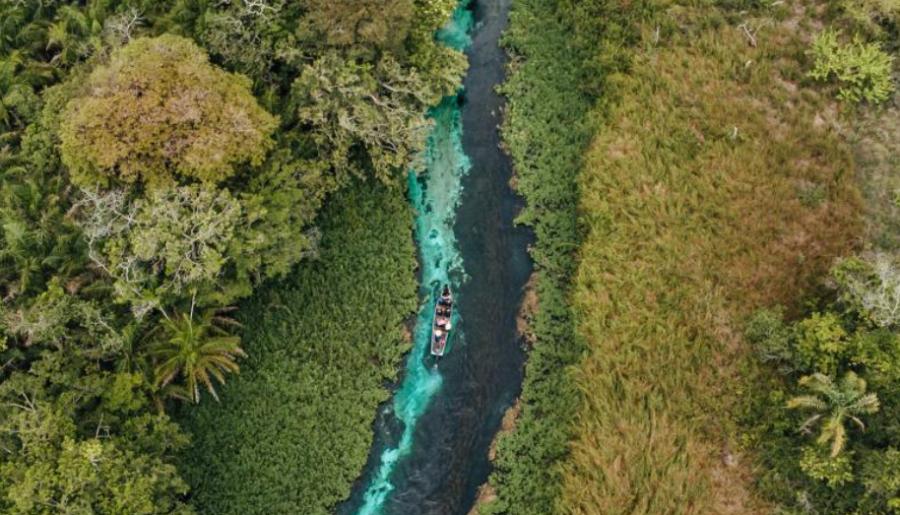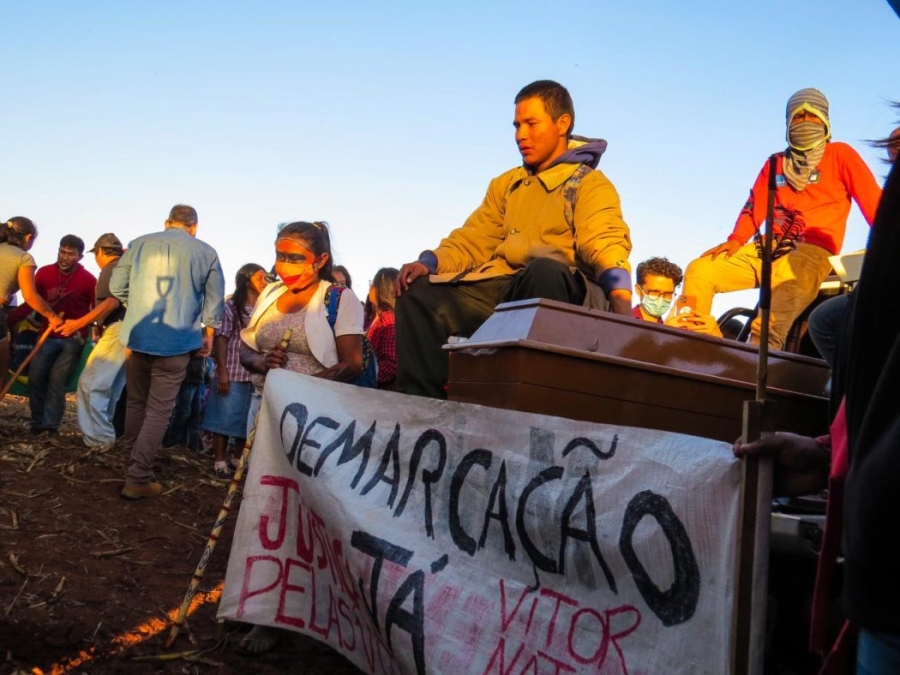


All photos courtesy of Tiago Zenero/PNUD Brasil.
For the first time in history, Indigenous athletes from all over the world gathered in the city of Palmas in the Amazon jungle state of Tocantins, Brazil, to compete in the first World Indigenous Games, held October 23 to November 1, 2015. Over 2,000 athletes representing nearly 50 different ethnic groups (including 22 from Brazil alone) participated in a variety of events, from a few Western-style games to many Indigenous traditional games. Some events were competitive, such as canoeing, archery, the spear toss, and the 100-meter rustic race, while others were demonstrative events, such as the football-like game of xikunahity, in which players control the ball only with their heads.
During the official announcement of the Games to the United Nations back in April, organizer Marcos Terena said that the World Games of Indigenous people is a decades-long dream finally being realized and a major achievement for Indigenous Peoples. The Games were run by the Inter Tribal Council, a Brazilian Indigenous Peoples NGO that has organized Brazil’s national Indigenous Games since 1996. Billed as “the Olympics of Indigenous sport,” they were put on in partnership with the Brazilian government’s Ministry of Sport A Gathering of Nations First-Ever World Indigenous Games Held in Brazil and the United Nations Development Program. At the 14th session of the UN Permanent Forum on Indigenous Issues, Brazil’s Minister of Sport, George Hilton, addressed over 100 Indigenous men and women, UN officials, journalists, and government representatives at the UN headquarters in New York. “These Games celebrate the lifestyle, the harmony with nature, and the diversity of Indigenous people of all ethnicities,” he said.
Canadian lawyer, former member of Parliament, and Honorary Chief Wilton Littlechild (Cree) attended the Games with his family. Littlechild has said he credits sports for helping him survive the trauma of the infamous residential schools. He started Canada’s first all-Aboriginal hockey team in Alberta, encouraging his players to focus on their education. He was also a founder of the North American Indigenous Games. Of this year’s World Indigenous Games, he said, “We wanted to be there for this historic event. It was 38 years in the making.” Littlechild was not only a delegation head in Brazil, but also a Games participant—he joined the river swimming race and brought home the gold in his age group. At 71, he was the oldest athlete by nearly a decade.
Beyond the athletic events, an additional aspect of the Games was a comprehensive program of discourse and celebration of culture, including the latest Indigenous People’s Social Forum, activities for Indigenous women, a lecture series, and various fairs; all forums in which participants could discuss human rights and environmental issues. One such event was the “parade of Indigenous beauty,” in which 60 women and girls took part. The Games organizers stressed that it wasn’t supposed to be a beauty contest—no queen was crowned, no runners-up chosen. Rather, they said, “it was a celebration of facial features, body types, and adornments not often given their due.”
Parade organizer Tainara da Silva (Terena) from Brazil’s Mato Grosso do Sul state, said that up until recently, such an event would have been unthinkable. “Before, the elders didn’t want to show their womenfolk in public,” said Silva, an agronomist who began organizing beauty contests on her home reservation several years ago. “But that’s changing. They now see that this is a way of valorizing our culture and traditions.”
Silva views the Games’ auxiliary events as a way to show the Brazilian public how diverse the country truly is. Brazil has more than 300 Indigenous groups, although their numbers have dwindled since pre-Columbian times and they now constitute less than 0.5 percent of the population. “Most times, people say, ‘Look, there’s an Indian,’ without even realizing how many Indigenous groups there are,” she said. “I want to show the richness of our people, how each of us is different and special.” Fittingly, the motto of the first World Indigenous Games was “En 2015, somos todos indígenas” (“In 2015, we are all Indigenous”).
The event was not without substantial controversy. Leaders from two Indigenous groups in Brazil, the Kraho and Apinaje tribes, announced their refusal to take part in the Games, citing the Brazilian government’s failure to address concerns about land rights and violence in many Indigenous communities across the country. The Union Association of Apinajé- Pempxà Villages said in a statement: “[We] cannot accept and participate in a sensationalized media event which aims to use images of Indigenous Peoples to distort the facts and lie abroad; hiding the true reality and suffering of the Indigenous Peoples of Brazil.” Some critics suggested that the federal money spent on the Games would have been better set aside for improved healthcare and education for Brazil’s Indigenous Peoples.
In addition, much criticism centered around a government proposal that would provide the country’s legislative branch, which is heavily influenced by agricultural lobbies, with power to define Indigenous lands, many of which contain valuable natural resources. The measure was approved by a congressional commission in the middle of the Games. In response, demonstrators burst into the arena during the 100-meter dash Wednesday night, effectively ending the evening’s activities and causing organizers to dramatically increase security. An international social media campaign backed by 83 organizations called for a global boycott of agricultural product imports grown on Indigenous lands shortly thereafter. The issue continued to develop alongside the positive media coverage of the Games, illuminating the dark underbelly of Indigenous struggle in Brazil along with corresponding struggles worldwide in tandem with international spectacles such as the Games.
The World Games, despite its many issues, was ultimately praised for what it tried to do. Chief Tammy Cook-Searson of the Lac La Ronge Indian Band told CBC News in Canada, “I’ve always been proud to be First Nations, but even prouder now after going to the Games. It just renews and rejuvenates ourselves as Indigenous Peoples of the world.” Felicia Chischilly (Navajo) of New Mexico, one of the United States’ 19 delegates, said to the Associated Press, “It’s a powwow in the true sense of the word—a gathering of nations.”
The next World Indigenous Games are set to be held in Canada in 2017. The country was selected in a consensus by a council of international Indigenous leaders during the Games in Palmas, based in large part on First Nations’ experience in organizing the North American Indigenous Games. Organizers say the precise location and date will be determined after spiritual and political consultations. Littlechild, who will play a key role in organizing this next edition of the Games, looks favorably upon this decision. Government partnership will be important, he said, since the main challenge in staging the games will be financial. He added that he will be looking for commitments from Indigenous communities as well as the private sector, saying that “some [corporations that] have a very bad name in terms of their activity on Indigenous territory [will have] a chance to reconsider how they have dealt with those communities.”



